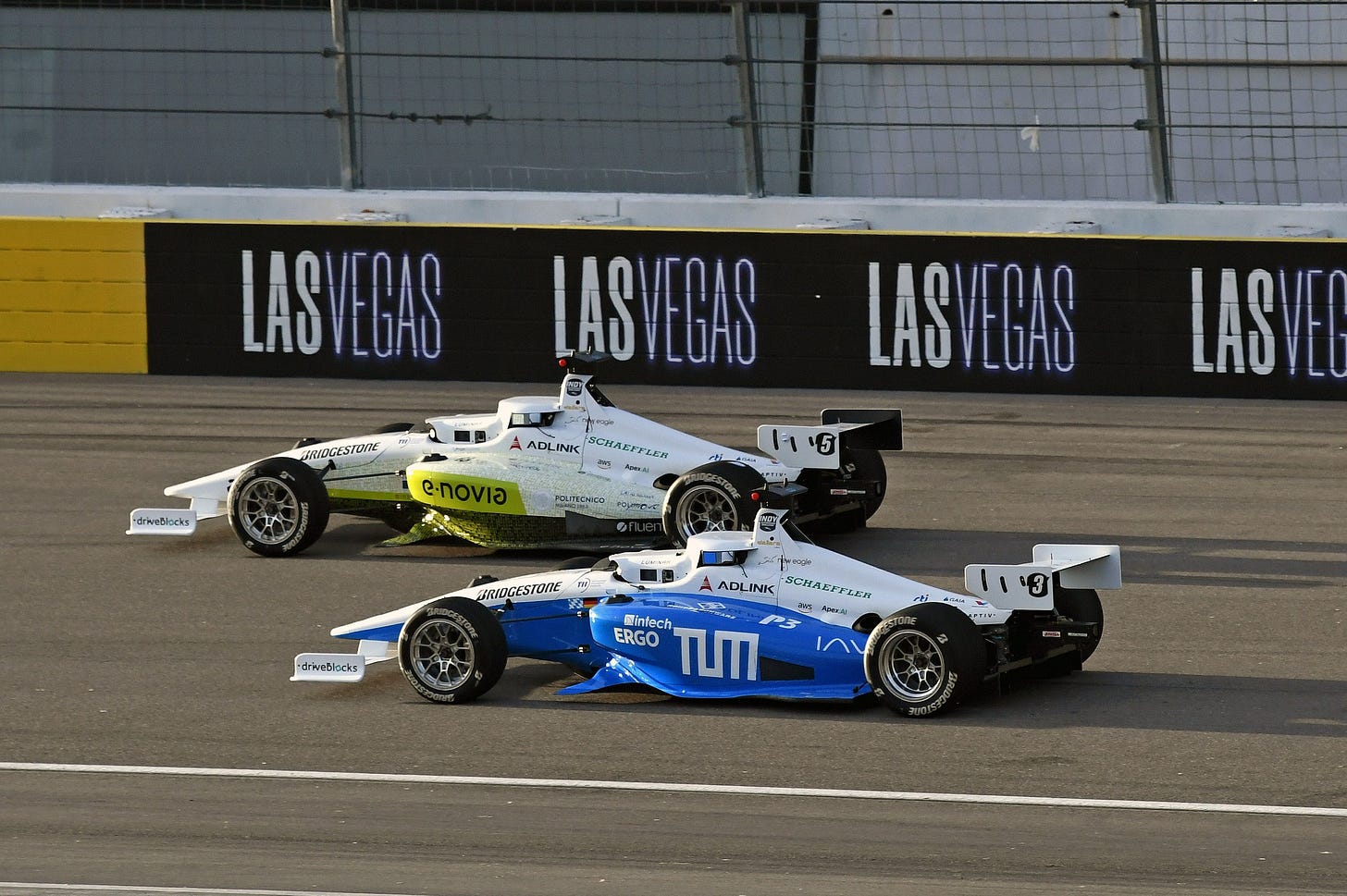Heartland: Code the Road
A keen documentary about the development of driverless auto racing, which plays out much like a traditional sports movie with a focus on very human challenges.
For Heartland Film Festival schedule and tickets, please click here.
You probably shouldn’t count me among those cheering the arrival of self-driving vehicles. I’m a car guy and love to drive — I actually find it relaxing, outside of rush-hour snarls and such. So the notion of replacing human drivers with autonomous computers strikes me as odd and vaguely discomforting.
But the truth is, one day, after they’ve gotten all the kinks worked out, it’ll be much safer for machines to drive vehicles than humans, whose errors are the cause of 94% of accidents. That could perhaps even extend to the world of auto racing.
“Code the Road” is an engaging and illuminating documentary about the Indy Autonomous Challenge, a racing event that began a few years ago with a bold proposition: put 10 cars on the track at the Indianapolis Speedway, the most storied racing grounds in the world, and have them race for a winner with one proviso: no human drivers, only computers.
What’s more, the first round of racing teams would not come from tech giants or rideshare behemoths with millions of dollars and years to spend on developing the programming, but undergraduate and graduate college students from around the world. And they would have just a few months to write the code to control these machines capable of ruinous speeds.
This documentary directed by Michael Kofsky is the chronicle of that first race, following the super-smart student engineers not as just geniuses of the future, but as empathetic human beings full of foibles and flaws. If half the joy of this movie is watching technology leap ahead in bounds right in front of us, the other half comes from meeting the people behind it.
There is footage of the testing and the actual races, of course, but much of the meat of the movie comes from probing 1x1 interviews with dozens of these amazing young people.
Probably the figure that stands out most is Andrew Saba, team leader from the University of Pittsburgh, who seems to grasp the magnitude of what they’re attempting. His own team’s triumphs and tragedies on the track — which I’ll not reveal here — make for some of the movie’s best moments.
Saba is also a walking quote machine, such as this when they first get to see the specially built Indy cars up close, with an array of cameras, GPS sensors and computer equipment where the driver’s cockpit should be:
“They've assembled Frankenstein's monster… they built the car, we're building the driver,” he says.
Or this, when the competition for the fastest speed butts up against the capabilities of this nascent technology: “We have to push it to the limit, but I'm scared that that limit is a concrete wall.”
It’s not just American students in the game. In fact, 41 students from 11 countries participated in the challenge, including Filippo Parravicini from Politecnico Di Milano in Italy. Their team, Polimove, quickly established themselves as one of the top competitors in the field. Parravicini brings a very grounded, eye-level approach to the game.
The clear early-on favorites are the German team, Technische University Munchen or TUM, with the charismatic Alexander Wischnewski as their front man. He seems a natural born leader, a geek with great people skills, and is careful to buck up his own team when challenges loom, and give credit to their opponents as well.
Other notable teams include students from Auburn University, the University of Virginia, Korea (KAIST) and the Euroracing team from a consortium of schools.
In addition to a $1 million prize, each team realizes they are also competing for the chance to take the knowledge they glean from this ambitious project and take it into the scientific research field and ultimately the marketplace. Indeed, some of the winning teams have already done so.
As the inaugural competitors in the challenge, issued by IAC president & CEO Paul Mitchell, the teams face plenty of disappointments and disasters. Despite months of efforts, some teams just couldn’t get their virtual driver to behave correctly, resulting in some disqualifications.
The shape of the challenge also changed over time. Initially they had envisioned 10 cars on the track racing at 200+ m.p.h., just like the Indy 500. Eventually the reality of logistics presented itself, and the challenge was split into two races: a solo race in Indianapolis to record the fastest speed over two laps, and a second one months later in Las Vegas with just two cars at a time as they took turns passing each other.
It’s still very heady stuff, especially when you realize the engineers are not remotely controlling the race cars from their pits — they literally just hit a button and send it on its way, to zoom or crash based on the software they’ve stayed up late nights creating. The number of variables are immense, from stuff as seemingly basic as recognizing what is a wall and what is another car.
“Code the Road” plays out in a lot of ways like a traditional sports movie, with an improbable group of underdogs who take up a challenge, enjoy initial success and then daunting challenges, before eventually pulling things out for a satisfying victory — if not exactly one we might have imagined.
Strap in… or, boot up, if you will. The future is now, whether we like it or not. I sure did.





